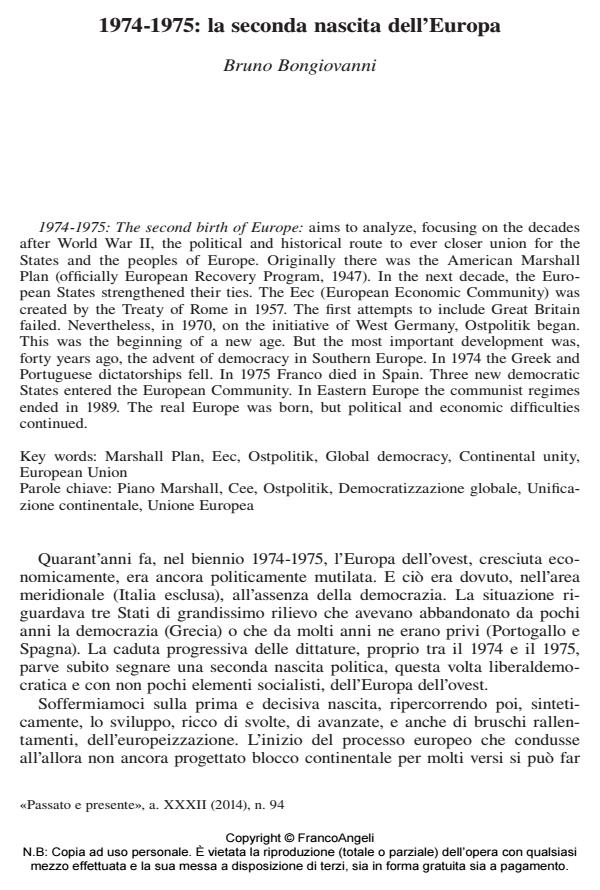1974-1975: The second birth of Europe
Journal title PASSATO E PRESENTE
Author/s Bruno Bongiovanni
Publishing Year 2015 Issue 2015/94
Language Italian Pages 10 P. 5-14 File size 91 KB
DOI 10.3280/PASS2015-094001
DOI is like a bar code for intellectual property: to have more infomation
click here

FrancoAngeli is member of Publishers International Linking Association, Inc (PILA), a not-for-profit association which run the CrossRef service enabling links to and from online scholarly content.
Aims to analyze, focusing on the decades after World War II, the political and historical route to ever closer union for the States and the peoples of Europe. Originally there was the American Marshall Plan (officially European Recovery Program, 1947). In the next decade, the European States strengthened their ties. The Eec (European Economic Community) was created by the Treaty of Rome in 1957. The first attempts to include Great Britain failed. Nevertheless, in 1970, on the initiative of West Germany, Ostpolitik began. This was the beginning of a new age. But the most important development was, forty years ago, the advent of democracy in Southern Europe. In 1974 the Greek and Portuguese dictatorships fell. In 1975 Franco died in Spain. Three new democratic States entered the European Community. In Eastern Europe the communist regimes ended in 1989. The real Europe was born, but political and economic difficulties continued.
Keywords: Marshall Plan, Eec, Ostpolitik, Global democracy, Continental unity, European Union
Bruno Bongiovanni, Editoriale. 1974-1975: la seconda nascita dell’Europa in "PASSATO E PRESENTE" 94/2015, pp 5-14, DOI: 10.3280/PASS2015-094001